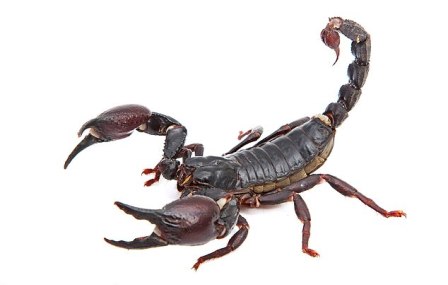Doctors could use scorpion venom to fight human infections after a study on mice found it can kill bacteria without poisonous effects.
The venom contains two chemicals which scientists discovered have antibacterial abilities and were able to kill strains responsible for diseases such as tuberculosis, according to Daily Mail.
Taken from the Diplocentrus melici scorpion, which is found in Mexico, the venom has promise because it managed to fight off bacteria without damaging healthy tissue in mice.
Professor Richard Zare, from Stanford University, study senior author, said: ‘These compounds might not be the poisonous component of the venom.
‘We have no idea why the scorpion makes these compounds. There are more mysteries.’
Professor Zare worked with Professor Lourival Possani, from the National Autonomous University of Mexico, who has focused on identifying compounds with medicinal potential in scorpion venom for 45 years.
Their students captured a few specimens of D. melici in Mexico then ‘milked’ them for the venom by stimulating their tails with mild electric pulses.
The researchers found two key chemical compounds called benzoquinones.
Both compounds had a similar molecular structure and one contained oxgygen and the other sulfur.
Professor Zare said: ‘We only had 0.5 microliters of the venom to work with. This is ten times less than the amount of blood a mosquito will suck in a single serving.’
The benzoquinone compounds were sent to Dr Rogelio Hernández-Pando, for further testing.
The team there found that red 1, 4-benzoquinone, one of the chemicals, effectively destroyed Staphylococcus aureus, which commonly cause skin infections.
Meanwhile blue 1,4-benzoquinone, the other, was lethal to strains of tuberculosis-causing bacteria – both normal and those resistant to drugs.
Tuberculosis is one of the world’s top causes of death, according to the World Health Organization, infecting 10million people and killing 1.6m in 2017.
Professor Zare said: ‘We found that these compounds killed bacteria, but then the question became “Will it kill you, too?”.
‘And the answer is no: Hernández-Pando’s group showed that the blue compound kills tuberculosis bacteria but leaves the lining of the lungs in mice intact.’
Although the team could work how to produce the medicine in a large quantity, there are limits to how much could be harvested from the animals.
Professor Possani said: ‘The amount of venom components we can get from the animals is extremely low.
‘The synthesis of the compounds was decisive for the success of this work.’
‘If you depended only on scorpions to produce it, nobody could afford it, so it’s important to identify what the critical ingredients are and be able to synthesize them.’N.H.Kh

